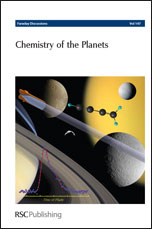In this article, we first explored the chemical dynamics of simple diatomic radicals (dicarbon, methylidyne) utilizing the crossed molecular beams method. This versatile experimental technique can be applied to study reactions relevant to the atmospheres of planets and their moons as long as intense and stable supersonic beam sources of the reactant species exist. By focusing on reactions of dicarbon with hydrogen cyanide, we untangled the contribution of dicarbon in its singlet ground and first excited triplet states. These results were applied to understand and re-analyze the data of crossed beam reactions of the isoelectronic dicarbon plus acetylene reaction. Further, we investigated the interaction of ionizing radiation in form of energetic electrons with organic molecules ethane and propane sequestered on Titan’s surface. These experiments presented compelling evidence that even at irradiation exposures equivalent to about 44 years on Titan’s surface, aliphatic like organic residues can be produced on Titan’s surface with thicknesses up to 1.5 m. Finally, we investigated how Titan’s nascent chemical inventory can be altered by an external influx of matter as supplied by (micro)meteorites and possibly comets. For this, we simulated the ablation process in Titan’s atmosphere, which can lead to ground and electronically excited atoms of, for instance, the principal constituents of silicates like iron, silicon, and magnesium, in laboratory experiments. By ablating silicon species and seeding the ablated species in acetylene carrier gas, which also acts as a reactant, we produced organo silicon species, which were then photoionized utilizing tunable VUV radiation from the Advanced Light Source. In combination with electronic structure calculations, the structures and ionization energies of distinct organo-silicon species were elucidated.

 Please wait while we load your content...
Please wait while we load your content...